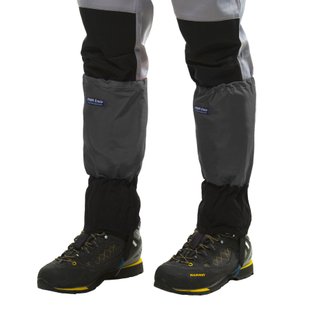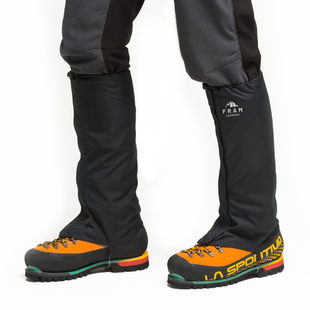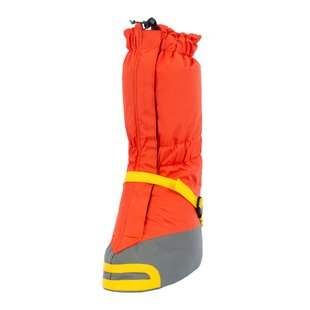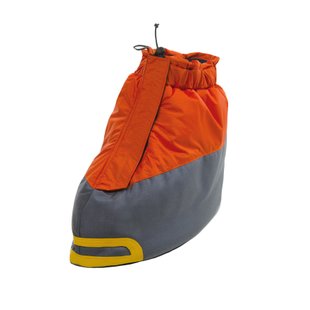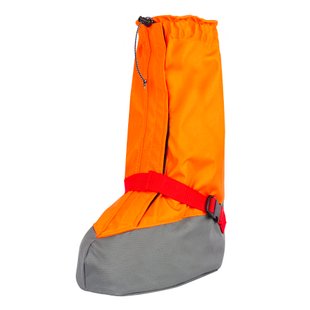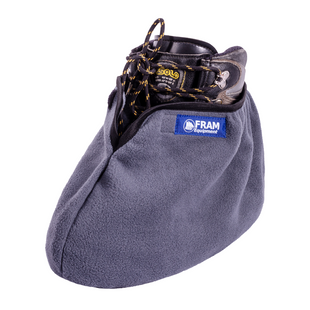|
Quantity
|
Out of stock
|
||
|
|
|||
In any journey, it is important to keep your feet dry and warm. After all, not only does your comfort during the trip depend on this, but also your safety and health. Properly selected footwear and accessories will help keep your feet intact and healthy.
How do you properly choose foot protection for hiking?
When preparing for a hike, it is important to pay attention to both the inner layer (socks) and the outer layer (gaiters, overboots).
- Trekking socks
When choosing trekking socks, it is important to select them according to the season. Lighter ones are suitable for summer, while insulated ones are needed for winter and high altitudes.
Trekking socks are made from synthetic materials (polyester, nylon), which have several advantages:
- They wick moisture away well;
- They dry quickly;
- They prevent unpleasant odors;
- The soft material prevents chafing and blister formation.
Winter trekking socks can be made from fleece. This material is suitable for moving in extreme cold, and such socks are also a great option for sleeping or resting at a campsite.
When choosing which trekking socks to buy, also consider the height of the product. Shorter ones are suitable for use with sneakers, while medium-height ones are suitable for trekking or mountaineering boots. High socks up to the knee are used if a compression effect is needed, and they also protect the shins from mechanical impact if you're only wearing shorts.
2. Tourist gaiters
Gaiters are a product worn over the ankle and covering the top part of the footwear. This protects against dirt and moisture getting inside. Typically, gaiters consist of two parts - a lower abrasion-resistant layer (Cordura) and an upper breathable layer (polyester, membrane).
By design, touring gaiters can be divided into two types:
- Zippered gaiters - fastened with a zipper; these gaiters are convenient and quick to put on, but they are heavier
- Solid (gaiter overboots) - these gaiters are put on like a tube over the foot and then pulled over the boot from the top; while this design is not as easy to put on and take off, the overboots are significantly lighter.
Before buying touring gaiters, pay attention to the following features:
- Attachment to the footwear - usually a hook for attachment to the laces at the front; it should be reliable and convenient.
- Underfoot cord - having such a cord prevents the gaiters from slipping off the foot; a metal cord will last longer.
- Foot fixation - an elastic band with a fastener for adjusting the width of the gaiter around the foot.
3. Touring overboots
Touring overboots are a fabric cover worn over the footwear entirely. They are primarily designed for moving in wet and cold conditions, providing additional insulation and protecting the feet from snow, moisture, and dirt. For winter and high-altitude hikes, they are very useful.
By design, touring overboots can be divided into two types:
- Fabric overboots - protect shoes from moisture and dirt. Usually, the lower part of the overboots is made of water-repellent, abrasion-resistant fabric. On the other hand, the upper part breathes and allows moisture to evaporate from the foot. A slightly more expensive but comfortable option is overboots made of membrane fabric.
If more insulation is needed, fabric overboots can be combined with gaiter liners. Gaiter liners are a kind of "sock" worn over the boot under the overboots, usually made of fleece.
- Insulated overboots - in addition to abrasion-resistant fabric, they have an insulating layer. They can be long up to the knee or short, covering just the boot itself. Short winter overboots for hiking can be combined with gaiters.
When choosing winter overboots, try them on over your boots and with gaiters. If you plan to use crampons, skis, or snowshoes, make sure your gear fits comfortably over the overboots.
Advantages of winter overboots:
Overboots allow you to solve the issue of altitude adjustment when choosing footwear. You don't need to buy several different pairs of shoes for the summit and the approach to the summit; it is enough to buy winter overboots and warm up when necessary.
Thus, using overboots saves money and weight in the backpack. Different types of foot protection can be combined depending on weather conditions.

























